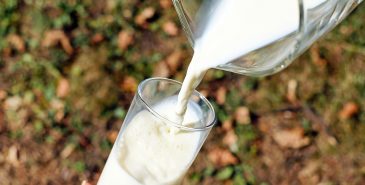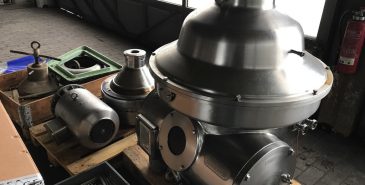By: me-trading
March 11, 2019
Never do this Milk Processing Mistake: Bactofugation before Separation
Bactofugation before Separation. At first sight, this might seem smart. However, if you examine this processing approach more thoroughly it becomes obvious that this is a big mistake, especially in a country where milk quality is rather poor. In this article, I want to explain why.
This is the line of thought: Why should I implement my bactofuge after the cream separator? If I implement it before it I would not only receive bacto-optimized milk but also bacto-optimized cream! That’s how I do it! Great idea!
Well, but what seems a great idea, can, in fact, become a real disaster, especially if this process is applied in a region with poor milk quality.
And here is why:
Doing this, you are processing raw milk with your bactofuge which comes into your machine just as it was pumped into the milk storage tanks in the dairy farms. That means all the foreign matter that may have gotten into the milk while milking the cows gets into your bactofuge as well. If you are living in a country where the hygienic standards in the dairy farms are rather low, your bacto-seperator receives a big amount of “dirt”. The result is that you cannot operate your machine properly because of the constant discharges necessary to keep bactofuge running. In the end, this error will cost you time and money.
If you really want to apply bactofugation before separation then you should implement a milk clarifier before the bactofuge. This will remove foreign matter from your milk so that afterward you can run your bactofugation process smoothly.
At last let us dismantle the argument, that you have cream of higher quality running raw milk through the bactofuge.
Actually, this isn’t wrong. However, the improvement of your cream through bactofugation in comparison to separation is so marginal that it doesn’t make sense to bactofugate the cream. Assuming that your separator is adjusted correctly, your cream is regarded as clean after separation. The reason is the lower density of the cream resulting to stay in the center of the separator while the bacteria are hurled to the “outside”.
I hope with the help of this article you will never have to make this mistake yourself. One of our customers had to feel the effects of this mistake and it was a disaster. Against our advice, he decided to try bactofugation before separation anyway. Realizing the problems that come with this type of process, he was forced to set up the process from new and following our advice to implement bactofugation AFTER separation.
If you found this article useful and would like to be updated on new articles, just subscribe to our newsletter scrolling down the page.
Subscribe to Newsletter
-
 March 11, 2019
March 11, 2019What is ESL Milk? A Comprehensive Guide
Everyone knows what UHT-milk is and many know roughly how it is produced.… -
 March 11, 2019
March 11, 2019Buying Used Dairy Equipment – Advantages and Disadvantages
As your dairy business grows, you will necessarily reach a point where yo… -
March 11, 2019
Increased Fat Content in the Discharge of you Clarifying Separator
Having a high-fat content in the discharge of your clarifying separator can be…


0 Comments